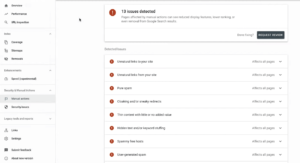
Second, we evaluated the tracking performance of the proposed method using the PPF13 video database, which comprises image sequences with fast moving subjects and large variations in pose and facial expression because there were no apparent differences in face tracking performance among the different face tracking methods for the Talking Face database, which comprises image sequences with good image quality and relatively small variations in pose.

Table 7 shows that (1) the proposed local facial feature detector achieved better performance 575 than the linear SVM, which has been used in many papers and (2) the proposed face tracking method achieved the highest image proportion and the lowest average error among all of the face tracking methods tested. Saragih's method was implemented in two ways: the local facial feature detectors were (d) IBUG Table 7 compares the four face tracking methods' image proportion at e th = 0.1 and average normalized errors for the Talking Face database. In all the experiments, our patch-based method outperforms the holistic gradient descent method in terms of accuracy and robustness of feature alignment and image registration. This approach was evaluated experimentally on more than 100 subjects for multiple illumination conditions and facial expressions. Our approach is not limited to intensity values or gradients, and therefore offers a natural framework to in- tegrate multiple local features, such as filter responses, to increase robustness to large initialization error, illumina- tion changes and non-rigid deformations. Specifically, we fit the patch-based face model to an unseen image using an exhaustive local search and constrain the local warp updates within a global warping space. We developed a patch-based method that requires only a single appearance template of the object.


Because most exist- ing methods rely on a holistic representation for the align- ment process, they require multiple training images to cap- ture appearance variance. Two sources of discrepancy between target and template are changes in illumination and non-rigid motion. Non-rigid object alignment is especially challenging when only a single appearance template is available and target and template images fail to match.


 0 kommentar(er)
0 kommentar(er)
